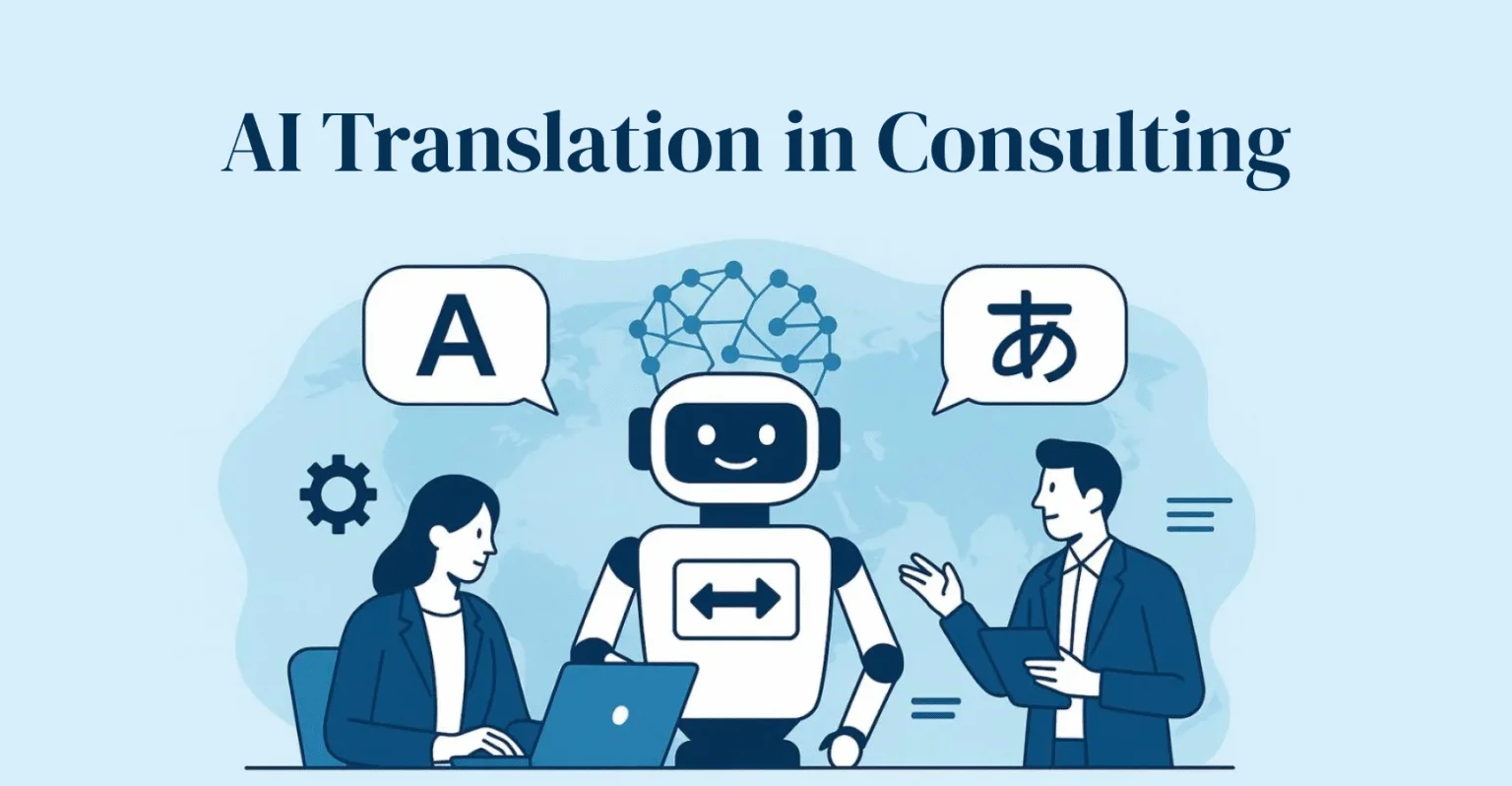When consulting firms rely on AI translation for sensitive proposals, the results can be costly. Take the recent case where a firm’s ‘cost optimization strategy’ was translated in a way that sounded exactly like mass layoffs to Japanese clients. The cultural tone was completely off, and months of relationship building just vanished.
This pattern occurs across international markets where firms rely too heavily on AI for client-facing work. AI has its place in consulting but knowing when to use it versus when human expertise is needed can be the difference between winning a client and losing them forever.
Why Translation Accuracy Matters More in Consulting
In our business, bad translation doesn’t just look unprofessional; it questions your competence. When you’re presenting digital transformation strategies or market entry plans, every word has to carry weight. A misunderstanding can eliminate you from consideration before you even get to present. Culturally insensitive messaging can damage relationships that took years to build. And in highly regulated fields like financial services or healthcare, even a small translation slip can spark regulatory reviews that slow everything down, or worse, put your client at risk.
We’ve watched teams craft brilliant strategy presentations only to see them fail because the translation undermined their authority and expertise.
Where AI Translation Actually Helps
For all its risks, AI translation works well for specific tasks, especially when speed matters more than nuance. Internal communications are a great example. When your New York team needs to quickly understand research from Mumbai, or you’re coordinating across six time zones, AI processes documents in minutes instead of days. Perfect translation isn’t necessary for internal coordination.
AI also maintains consistency better than humans. If you set a technical term once, it will use it correctly throughout a 200-page document without slipping up, something even experienced translators can struggle with on long projects.
And of course, cost savings are significant. AI can reduce translation expenses by 60 –70% on draft materials, freeing up budget for human expertise where it really counts.
Where AI Translation Falls Short
The problems arise when AI has to handle the kind of sophisticated business communication that clients expect from premium consulting firms.
Take a phrase like “rightsizing the organization.” AI might translate this literally, but experienced translators know this needs cultural adaptation. German clients might accept a direct translation. Japanese clients could see it as insensitive. French clients might prefer something entirely different, like “optimizing organizational structure.”
Cultural sensitivity goes beyond just language to business practices and professional norms. AI can’t recognize that a casual Silicon Valley tone might seem unprofessional to traditional banking clients, or that persuasion strategies effective in individualistic cultures don’t work in collectivistic ones. In short, AI falls short in the kind of high-level, strategic messaging that wins trust in the boardroom.
How Smart Consulting Firms Use AI Translation
Successful firms don’t see this as an all-or-nothing choice. They match the translation method to the content’s risk and business impact. Internal documents, research summaries, and preliminary drafts go through AI first. This keeps information flowing quickly across global teams without the high cost of professional translation.
Client-facing materials, proposals, deliverables, and thought leadership, always get human translation with a cultural review. When the stakes are that high, investing in professional translation isn’t a luxury; it’s the difference between winning the work or walking away empty-handed.
Some firms use AI for quick RFP responses, then layer in human expertise for final submissions. It’s an approach that balances speed with quality.
Choosing the Right Translation Approach
You just have to be honest about what each type of content needs to accomplish. For internal project updates, AI works fine. Occasional awkward phrasing won’t hurt business relationships. But for content that represents your firm’s expertise—client proposals, final reports, thought leadership, human expertise is essential. These materials directly shape how clients perceive your capabilities.
Yes, translation budgets matter. But stack a $20,000 translation bill against a lost $2 million contract for example, and suddenly, the math speaks for itself.
At the end of the day, clients buy your judgment, not just your frameworks. Treat translation choices with the same care you’d give to a board-level recommendation.

